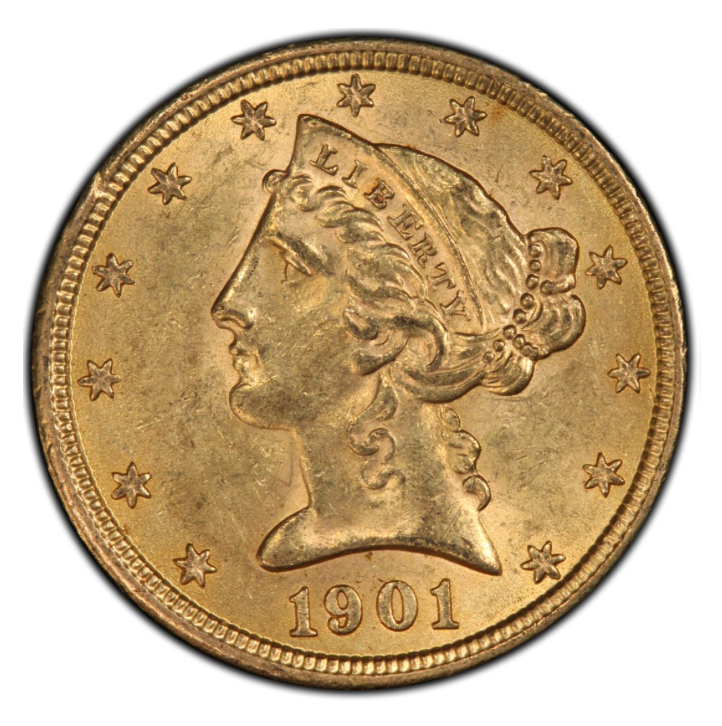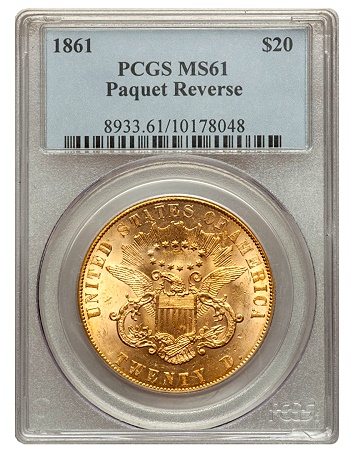CM: I guess this has to do with learning the market and knowing how to price coins. As you know, many coin telemarketers and so-called bullion firms push classic U.S. gold coins on customers citing the FDR Executive Order as a reason not to invest in or collect bullion. What do you think of this practice and do you think the concerns people might have about another government recall of gold is unfounded?
DW: A sales pitch like that something that I’ve never done and would never do. To me, it’s playing on people’s fears and I don’t believe that the way coins should be sold is as objects that you need when the world’s coming to an end.
I have always viewed coins as interesting collectibles and the story that they tell, for me, is different than the one that the marketer might tell a potential client. In the long run, people who buy coins because they want to own a piece of history and the rarity of the piece speaks to them–they enjoy their purchases and do better financially.
CM: Do you see coins from folks who bought coins from one of these firms only to later lose interest or patience with them?
DW: Generally, I see people who got involved with that area of the market when it’s a post mortem and they are going to sell their stuff and find out that it’s not worth what they thought it was. Normally, I don’t play in the same venues, so I’m not typically the person that is buying that type of material.
 CM: One of the things that I see a lot with these classic gold offers from the telemarketers is generic material. About two years ago, when gold was higher than it is now, Hubert and I wrote a piece where we told readers not to pay numismatic premiums for common U.S. gold coins in common uncirculated grades because high bullion prices kill the coin’s collectability. Do you agree with that?
CM: One of the things that I see a lot with these classic gold offers from the telemarketers is generic material. About two years ago, when gold was higher than it is now, Hubert and I wrote a piece where we told readers not to pay numismatic premiums for common U.S. gold coins in common uncirculated grades because high bullion prices kill the coin’s collectability. Do you agree with that?
DW: Yes, I agree with that and that’s a great observation. One thing that also effects generic gold is the fact that collectors’ tastes are changing and because of this companies don’t offer generic gold coins to the public like they used to. They are either selling moderns or they are selling rarities now. This is one of the reasons why a $10 Indian in MS-63 is cheaper now. The price of gold is part of the reason, but also supply has remained consistent.
CM: How prevalent a problem is coin doctoring with gold? We’ve had numerous reports in recent years about puttied coins making it past the certification services.
Recently, at the ANA, Stack’s even offered a famous gold quarter eagle that once belonged to John Jay Pittman. Stack’s said that the coin had been “expertly repaired” since that sale so as to remove graffiti from the coin’s surface, yet it graded AU-50.
DW: I know that coin and yes, it shouldn’t have been graded and I don’t think it sold. That’s a very famous coin and everybody knows about it.
Overall, however, I think the services are doing a better job now than they have in the past.
One of the difficult things for the services is dealing with the number of coins that they see on a daily basis.
When you look at an auction and see a puttied coin, obviously it was a mistake. Even if only 1% of the coins a service grades are mistakes, that’s still a lot of coins in the marketplace and no one really comments when the services do a good job. We just sort of expect them to. So, I think they are doing a reasonably good job. There are still coins that get through that have problems. And yes, there are definitely some guys out there that are doctoring coins.
As a buyer, you have to do your homework and stay vigilant.
 CM: Well one coin that I’m sure you did your homework on is the 1861 Paquet Reverse $20 Liberty Head double eagle that you recently purchased for $1.645 million. For people who might not know, who was Anthony Paquet and what makes this coin so special?
CM: Well one coin that I’m sure you did your homework on is the 1861 Paquet Reverse $20 Liberty Head double eagle that you recently purchased for $1.645 million. For people who might not know, who was Anthony Paquet and what makes this coin so special?
DW: Paquet was an assistant engraver hired by the U.S. Mint in the 1850s. He was of… “questionable” artisanship, although he did produce some good stuff. For political reasons, he seemed to have his path to the engravership blocked. In other words, he pitched the garbage inning of the Mint’s products of that era.
Paquet was given the chance to redesign the reverse of the double eagle and he started experimenting with it in 1859-1860. I actually like the changes he made to the reverse. I think it’s interesting. But for various reasons, it was not approved–or once it was approved, it was not considered a success. After his 1861 reverse was pulled by the powers-that-be, I don’t think he did much of anything else afterwards. So, for me, it’s a very interesting piece because it’s a departure from the norm in a hugely popular and lengthy series.
CM: What do you think of the price you paid for the piece? Were you happy?
DW: I was prepared to pay a little more for the coin, so obviously I was happy with the price. The customer I sold it to was happy as well. There are not a lot of times that you have the opportunity to buy a coin that is that rare. It has huge opportunity value.
CM: So tell me about the specific coin.
DW: The coin is fascinating. It was discovered around 1874-1875. It appeared in two auctions in the 1870s and then even though it was considered a great rarity at the time, it seems that it got spent and wound up going to Europe as a piece of bullion. It’s a complete fluke that it didn’t get melted.
The coin was then rediscovered by Paul Wittlin. He was the first guy to fly over to Europe to buy rare U.S. gold coins. He discovered the coin and sold it to Paramount in the 1950s or early ‘60s. It was also in the Dallas Bank Collection and sold in a Stack’s and Sotheby’s sale shortly after 9/11 where it brought, I think $345,000.
As for the coin itself. MS-61 is the grade. The reverse is a solid MS-64. PCGS laid it in the holder reverse side up. It’s somewhat ironic for a coin as rare as this and notable for its reverse, that the reverse would be so pristine. The obverse has bag marks that are fairly noticeable.
CM: Another big gold coin story this year was the Saddle Ridge Hoard. What did you think about that offering?
DW: I bought a number of coins from the Saddle Ridge Hoard. I thought that the story was terrific and the coins were all well preserved. I liked everything about the deal.
CM: How about the ongoing recovery efforts of the S.S. Central America gold off the coast of North Carolina? What should collectors expect to come from that?
DW: The information is public. The company has updated the list of coins it has pulled out. From what I’ve read so far, there will be some spectacular stuff to come from the expedition. Lots of 1857-S $20s, of course, but there are other issues that are going to come online that will really change the market.
CM: Why do you think there is so much low hanging fruit left from that shipwreck. You’d think the last time they went out that they would have been thorough in bringing gold up?
DW: I can’t say for sure, but if I had to guess, I’d say maybe it has to do with technology. Technology has grown considerably more sophisticated in the past 20 years. It’s possible that they can see more and get more than they could last time. The amount of gold they are still pulling up is staggering.
CM: It recently came to light that the Pogue family is going to sell their historic collection. Some dealers sound worried that too many great collections are coming out all at once and that this might hurt the top end of the rare coin market. Do you share that sentiment?
DW: No. I’m not concerned at all. I think it’s going to be smartly marketed, for one. Stack’s is going to be smart, I think, and space it out.
The Pogue collection is a really unique collection with a super high value on a coin-by-coin basis. I don’t think my mind can calculate the average lot value. There are not a lot of $1,000 coins in this collection.
So, for the typical collector, not much of an impact at all. On the Top 1% market, it will likely get people to participate in coins that have never been involved before. Maybe some international buyers and some extremely wealthy new American buyers as well. The magnitude and significance of the coins will be a terrific boost for the upper end of the market.
So, I’m not worried about the negative impact. There’s a number of coins in the collection that I’d love to buy. I don’t know if I’m going to be able to or not because it’s going to be a brutally competitive environment where you’ll have to compete against a lot of end users and if you buy something, everybody on the planet is going to know what you paid for it. Buying a $300,000 or $500,000 coin on spec… I dunno if that makes good business sense, but I’d be thrilled to own one.
CM: Douglas Winter. Gold coin expert, nationally-known dealer, author… thank you for taking the time to talk to us.
DW: You’re welcome, any time.




